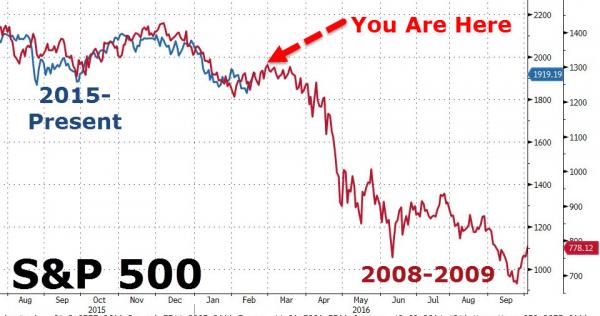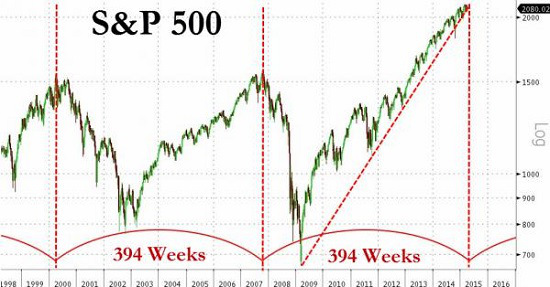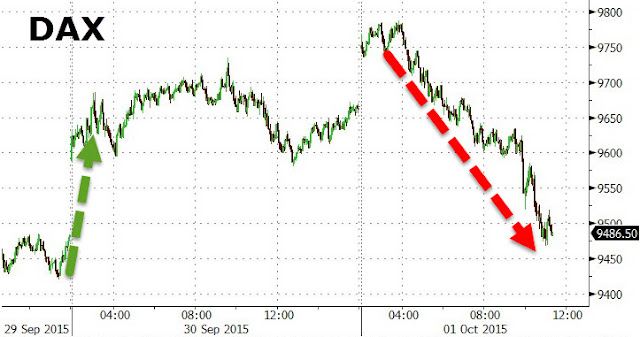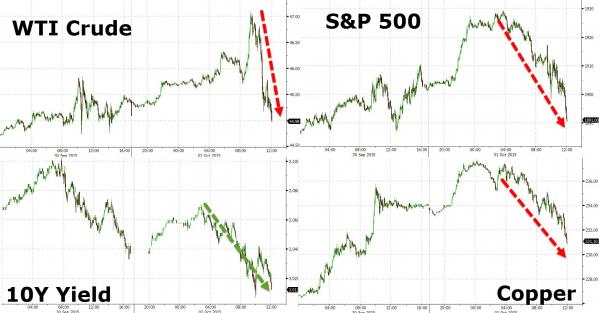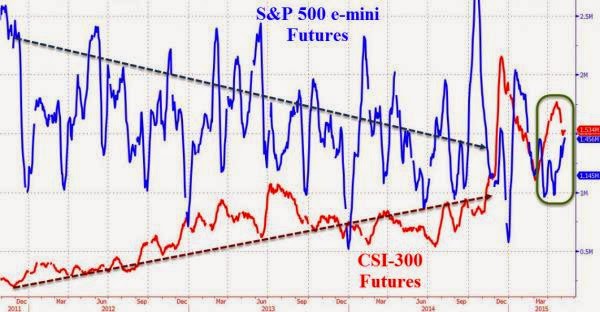As 2014 has closed, we want to present our view of where markets are headed in 2015 in a series of coming articles. Toward the end of this series, we will cover real estate and the economy, something slightly different than what we normally cover in our market reports, but something you may find quite interesting. Let's start by saying this: The year 2015 will be historic, with unusual events and high market volatility.
The Stock Market
We believe there will be at least one stock market crash in 2015 (a decline of 15 percent or greater, probably much greater than a 15 percent decline), with perhaps one or more mini-crashes (10 percent or more). We believe that the largest stock market decline in 2015 will be a crash, and that this crash will be underway (could last several weeks or months) within two weeks before or after September 14th, 2015. In other words, we see a stock market crash in the latter third of 2015. It could be huge, and could change the financial, political and regulatory landscape for years to come.
There is a convincing amount of evidence for this in this author's opinion. First is the multi-decade Jaws of Death pattern. It is finished or will be by the latter part of 2015, and warns of a mega-decline in the stock market, and an economic depression. I wrote a book about this (available at amazon.com) that many of you have read. The time will be at hand for the fulfillment of this stock market pattern in 2015.
The second convincing piece of evidence is a cycle pattern we follow that is rare and extremely correlative to stock market declines and economic downturns, pointing to a powerful economic and market collapse around September 14th, 2015. This cycle pattern was present for the 2008 and 2001 market plunges. It will be present again in 2015, the first time it has been evident since 2008. Then there is the Bradley model which is an astro cycle turn indicator which points toward a turn on September 23rd, 2015. We also have a Phi Mate Turn date scheduled for September 15th, 2015.
The multi-decade Jaws of Death stock market pattern is calling for an economic collapse and a market collapse. This is a Bear market for the ages coming, which we believe is already starting in stealth, masked by the artificial stock market rally whose main purpose has been to hide the truth about the underlying economy's collapse, including the unannounced disintegration of the middle class in America. Part and parcel with Bear markets are social strife issues. A negative psychological state of mankind.
One developing social strife that will have an enormous negative effect upon the stock market and the economy is the civil war that is breaking out in the United States between liberals and conservatives. It is time to call it what it is, a civil war. We see this in Washington's inability to govern and negotiate. We see this with our judicial systems' decision-making being driven ideologically, interpreting laws according to the justices' in power political views and personal values, with relativism and the ends justifies the means enforcement of American jurisprudence evident in many cases. The divide is wide and passions are at the brink of violence. Truth is being redefined as a point of view. The U.S. Constitution is being rewritten by court decisions and precedent cases that could be completely distant from what is written on that sacred piece of paper. The plain language of the U.S. Constitution is being ignored and replaced by pseudo intellectual hyperbole. This brewing civil war will be a contributing factor in the destruction of the economy and the stock market in 2015 and beyond, not to mention America's traditional values and way of life.

